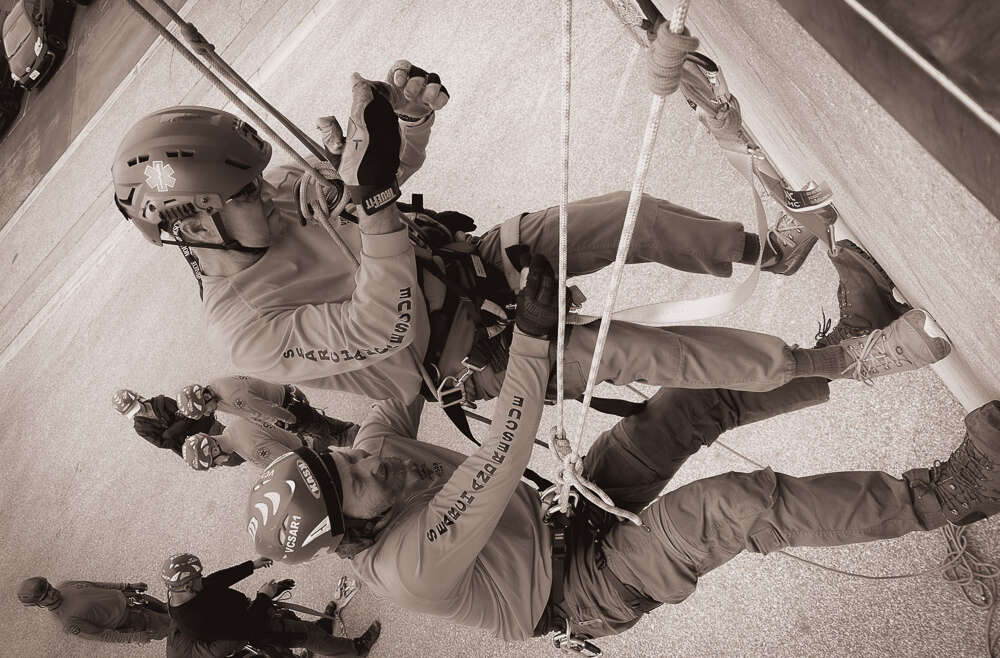Search and rescue climbing and belay techniques are critical for safely extracting individuals from precarious positions in mountainous or vertical environments. Clear communication is vital, using standard climbing commands or radios in complex scenarios. VCSAR1 always uses strong, redundant anchor systems for all rescue operations. Every critical action should have a backup, whether it’s an additional belay or a secondary anchor point.
These techniques require extensive training and practice, and VCSAR1 works year-round in various scenarios to maintain proficiency and safety standards.
Belay Techniques
Standard Belay (Top Rope Belay). Primary method for controlling a climber’s fall by managing the rope through a belay device. The belayer feeds out rope as the climber ascends and takes in slack when the climber moves up, using a belay device like an ATC or a GriGri. If the climber falls, the belayer locks off the rope to arrest the fall. In a rescue scenario, this might be used in a controlled descent of an injured climber.
Munter Hitch. A versatile knot used for belaying without a belay device. Formed by making a loop in the rope, passing the rope through this loop, and then clipping the loop into a carabiner. It can be used to belay in both directions and is especially useful when equipment is limited. Useful in emergencies where a belay device is not available or for managing multiple loads.
Guide Mode on Belay Devices. Allows for belaying two climbers at once or managing a climber in both directions (up and down). Certain belay devices have a mode where they can lock off automatically in one direction, simplifying the management of multiple climbers or an injured person being lowered.
Search and Rescue Climbing Techniques
Ascending a Rope. To reach or rescue someone higher up or to ascend back to a safe point after a rescue. Uses mechanical ascenders or prusik knots. The rescuer clips ascenders onto the rope, one above the other, and uses them to climb the rope step by step.
Rappelling. To descend quickly from high points, especially useful for evacuating injured climbers. The rescuer controls descent using a rappel device, managing friction on the rope. Techniques like the “fireman’s belay” can be used where a second person controls the rope from below for added safety.
Rescue Hauling Systems. To lift incapacitated climbers or gear. Utilizes mechanical advantage systems (like 3:1 or 5:1 pully systems) to reduce the force needed to haul weight. Z-pulleys or piggyback systems can be set up to make pulling easier.
Litter Rigging. Safely transport an injured person off the mountain. The injured person is placed in a litter, which is then secured to the rope system for lowering or hauling. This often involves multiple rope anchors and belay stations for redundancy.

